Grow Pepino Melon at Home and unlock a world of sweet, refreshing flavor right in your backyard! Have you ever dreamt of biting into a juicy, honeydew-like fruit with a hint of cucumber, all grown with your own two hands? Well, dream no more! This DIY guide will walk you through everything you need to know to successfully cultivate these unique and delicious fruits.
While not as widely known as other melons, the Pepino Melon, also known as the Melon Pear, has a fascinating history, originating in the Andean regions of South America. For centuries, it has been a staple in local diets, prized for its refreshing taste and nutritional benefits. Now, you can bring a piece of that history to your own garden!
Why should you bother learning how to grow Pepino Melon at Home? Because store-bought Pepino Melons are often hard to find and can be quite expensive. Plus, nothing beats the satisfaction of harvesting your own homegrown produce. Imagine impressing your friends and family with this exotic fruit, knowing you nurtured it from seed to table. This DIY project is perfect for gardeners of all levels, and I’m here to guide you every step of the way. Let’s get started and transform your garden into a Pepino Melon paradise!
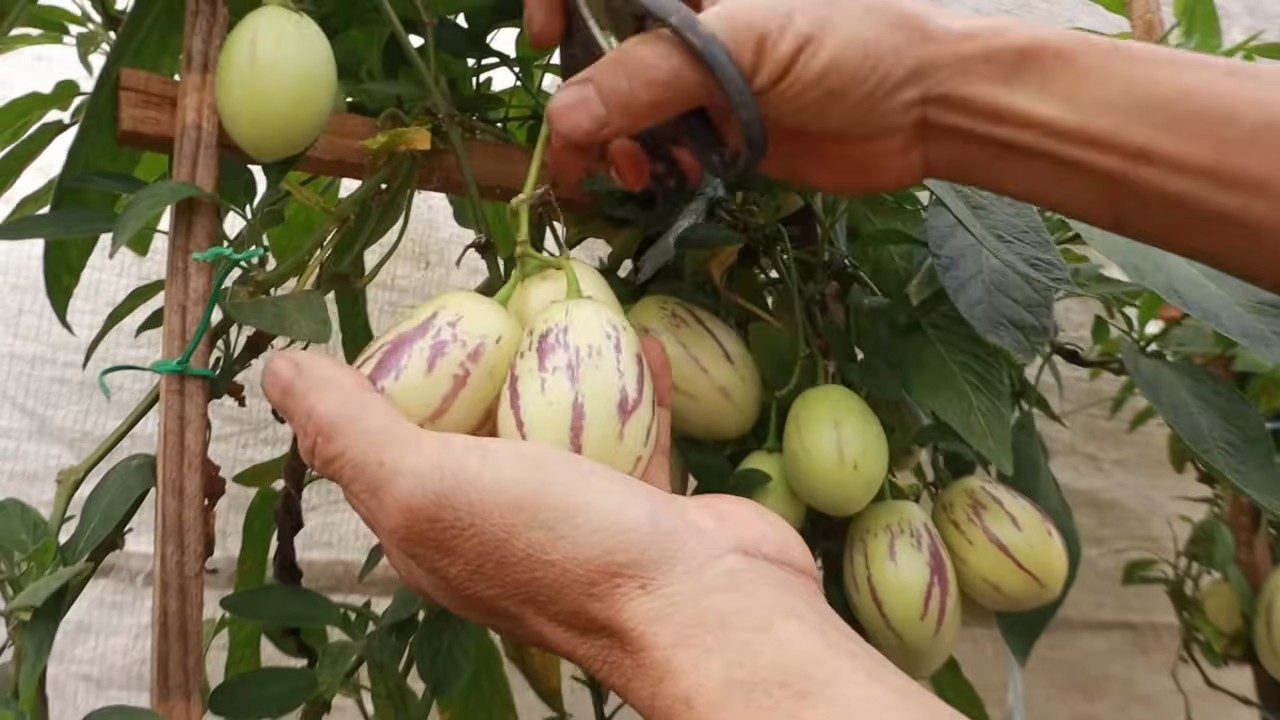
Grow Your Own Pepino Melon: A Step-by-Step Guide
Hey there, fellow gardening enthusiasts! Ever heard of a Pepino Melon? It’s a fascinating fruit that tastes like a cross between a melon and a cucumber, and it’s surprisingly easy to grow at home. I’ve been growing them for a few years now, and I’m excited to share my secrets with you. Get ready to impress your friends and family with this unique addition to your garden!
What You’ll Need
Before we dive in, let’s gather all the necessary supplies. Trust me, having everything ready beforehand will make the whole process much smoother.
* **Pepino Melon Seeds or Cuttings:** You can find seeds online or at your local garden center. Cuttings are another great option if you know someone who already grows Pepino Melons.
* **Seed Starting Tray or Small Pots:** For starting seeds indoors.
* **Seed Starting Mix:** A light and airy mix specifically designed for seedlings.
* **Larger Pots (at least 5 gallons):** For transplanting your seedlings.
* **Potting Soil:** A well-draining potting mix for mature plants.
* **Fertilizer:** A balanced fertilizer (e.g., 10-10-10) or one specifically formulated for tomatoes or peppers.
* **Watering Can or Hose:** For watering your plants.
* **Trellis or Stakes:** Pepino Melons can get quite bushy, so they’ll need support.
* **Pruning Shears:** For trimming and shaping your plants.
* **Sunny Location:** Pepino Melons need at least 6-8 hours of sunlight per day.
* **Optional: Grow Lights:** If you’re starting seeds indoors during the winter months.
Starting from Seeds: A Detailed Guide
Starting from seeds is a rewarding experience, although it requires a bit more patience. Here’s how I do it:
1. **Sowing the Seeds:** Fill your seed starting tray or small pots with seed starting mix. Moisten the mix thoroughly. Sow the Pepino Melon seeds about ¼ inch deep. I usually sow 2-3 seeds per cell or pot to increase the chances of germination.
2. **Creating a Humid Environment:** Cover the tray or pots with a plastic dome or plastic wrap to create a humid environment. This helps the seeds germinate. Place the tray or pots in a warm location (around 70-75°F).
3. **Germination:** Keep the soil consistently moist, but not soggy. Germination usually takes about 1-3 weeks. Once the seedlings emerge, remove the plastic cover and place them under grow lights or in a sunny window.
4. **Thinning the Seedlings:** If you sowed multiple seeds per cell or pot, thin them out to one strong seedling per cell or pot. Simply snip off the weaker seedlings at the soil line.
5. **Hardening Off:** Before transplanting your seedlings outdoors, you need to harden them off. This means gradually exposing them to outdoor conditions over a period of 7-10 days. Start by placing them in a sheltered location for a few hours each day, gradually increasing the amount of time they spend outdoors.
Propagating from Cuttings: A Faster Route
If you have access to a Pepino Melon plant, propagating from cuttings is a faster way to get started.
1. **Taking the Cuttings:** Choose healthy, non-flowering stems. Cut 4-6 inch long sections just below a node (where a leaf grows). Remove the lower leaves, leaving only a few leaves at the top.
2. **Rooting the Cuttings:** You can root the cuttings in water or directly in soil.
* **Water Method:** Place the cuttings in a glass of water, making sure the lower nodes are submerged. Change the water every few days. Roots should start to appear in about 1-2 weeks.
* **Soil Method:** Dip the cut end of the cuttings in rooting hormone (optional). Plant the cuttings in a small pot filled with well-draining potting mix. Keep the soil moist and cover the pot with a plastic bag to create a humid environment.
3. **Transplanting the Cuttings:** Once the cuttings have developed a good root system (either in water or soil), they are ready to be transplanted into larger pots.
Transplanting and Growing Your Pepino Melon
Now comes the exciting part – transplanting your seedlings or rooted cuttings into their permanent homes!
1. **Choosing the Right Pot:** Select a pot that is at least 5 gallons in size. Pepino Melons need plenty of room for their roots to grow. Make sure the pot has drainage holes to prevent waterlogging.
2. **Preparing the Potting Mix:** Fill the pot with a well-draining potting mix. You can also add some compost or aged manure to enrich the soil.
3. **Transplanting:** Gently remove the seedling or rooted cutting from its original container. Dig a hole in the potting mix that is large enough to accommodate the root ball. Place the plant in the hole and backfill with potting mix. Water thoroughly.
4. **Providing Support:** Pepino Melons can get quite bushy and their stems can be brittle, so they need support. Install a trellis or stakes near the plant. As the plant grows, tie the stems to the trellis or stakes using soft twine or plant ties.
5. **Sunlight and Watering:** Place the pot in a sunny location where it will receive at least 6-8 hours of sunlight per day. Water regularly, especially during hot weather. The soil should be consistently moist, but not soggy.
6. **Fertilizing:** Fertilize your Pepino Melon plant every 2-3 weeks with a balanced fertilizer or one specifically formulated for tomatoes or peppers. Follow the instructions on the fertilizer label.
Pruning and Training Your Pepino Melon
Pruning and training are essential for maximizing fruit production and keeping your plant healthy.
1. **Pinching Back:** When the plant is young, pinch back the tips of the stems to encourage branching. This will result in a bushier plant with more fruiting sites.
2. **Removing Suckers:** Remove any suckers (shoots that grow from the base of the plant) as they will divert energy away from fruit production.
3. **Thinning the Fruit:** If your plant is producing a lot of fruit, you may want to thin it out to improve the size and quality of the remaining fruit. Remove any small or misshapen fruit.
4. **Training to the Trellis:** As the plant grows, train the stems to climb the trellis or stakes. Use soft twine or plant ties to secure the stems.
Dealing with Pests and Diseases
Pepino Melons are generally resistant to pests and diseases, but they can occasionally be affected by aphids, whiteflies, or powdery mildew.
1. **Aphids and Whiteflies:** These pests can be controlled with insecticidal soap or neem oil.
2. **Powdery Mildew:** This fungal disease can be prevented by providing good air circulation and avoiding overhead watering. If powdery mildew does occur, treat it with a fungicide.
Harvesting Your Pepino Melons
The moment you’ve been waiting for! Harvesting your own Pepino Melons is incredibly satisfying.
1. **Ripeness:** Pepino Melons are ready to harvest when they turn a creamy yellow color and have a slightly soft feel. They should also have a sweet, melon-like aroma.
2. **Harvesting:** Gently twist the fruit from the stem.
3. **Storage:** Pepino Melons can be stored in the refrigerator for up to a week.
Enjoying Your Harvest
Pepino Melons can be eaten fresh, added to salads, or used in desserts. They have a unique flavor that is both sweet and refreshing. I personally love them sliced and added to a summer salad with feta cheese and mint. You can also grill them for a unique side dish.
Troubleshooting
Even with the best care, you might encounter some challenges. Here are a few common issues and how to address them:
* **Lack of Fruit:** This could be due to insufficient sunlight, poor pollination, or lack of nutrients. Make sure your plant is getting enough sunlight, consider hand-pollinating the flowers, and fertilize regularly.
* **Yellowing Leaves:** This could be a sign of overwatering, underwatering, or nutrient deficiency. Check the soil moisture and adjust your watering accordingly. Fertilize with a balanced fertilizer.
* **Slow Growth:** This could be due to cool temperatures, poor soil, or lack of sunlight. Make sure your plant is in a warm, sunny location and that the soil is well-draining and fertile.
Growing Pepino Melons is a fun and rewarding experience. With a little bit of care and attention, you can enjoy these delicious and unique fruits from your own garden. Happy gardening!
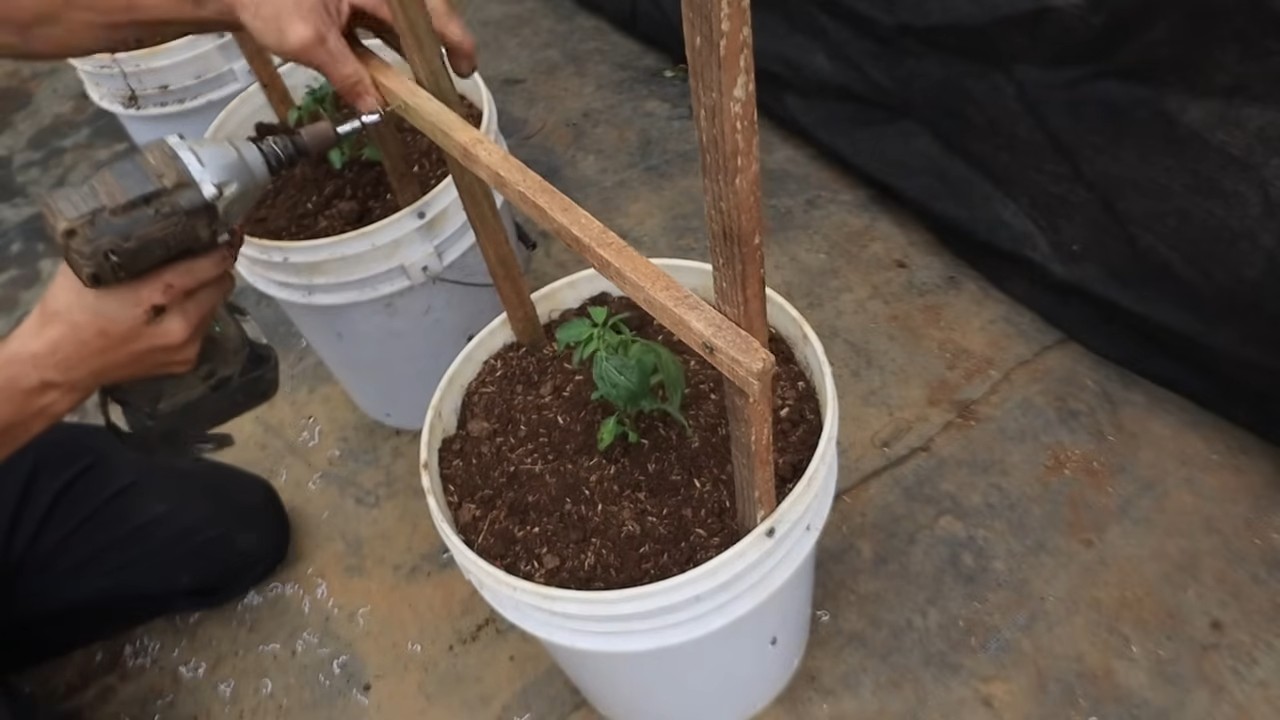
Conclusion
So, there you have it! Growing Pepino Melon at home is not only achievable, but it’s also a deeply rewarding experience. Forget relying solely on specialty stores or farmers’ markets for this unique fruit. With a little patience and the right approach, you can cultivate your own supply of sweet, refreshing Pepino Melons right in your backyard or even on your balcony.
Why is this DIY trick a must-try? Because it empowers you to control the entire process, from seed to table. You’ll know exactly what goes into your fruit, avoiding potentially harmful pesticides or chemicals. Plus, the flavor of a homegrown Pepino Melon, ripened to perfection under your watchful eye, is simply unmatched. It’s a taste of summer sunshine that you can enjoy whenever you please.
But the benefits extend beyond just the taste. Growing your own Pepino Melon is a fantastic way to connect with nature, learn about plant life cycles, and even reduce your carbon footprint by minimizing transportation needs. It’s a sustainable and fulfilling hobby that offers a delicious payoff.
Looking for variations? Consider experimenting with different growing mediums. While a standard potting mix works well, you might try incorporating compost or other organic materials to boost nutrient levels. You can also explore different trellising methods to support the plant’s growth. Some gardeners prefer a traditional vertical trellis, while others opt for a more sprawling horizontal setup. The choice is yours!
Another exciting variation is to try grafting your Pepino Melon onto a more vigorous rootstock, such as a tomato plant. This can improve disease resistance and overall plant health. Just be sure to research the proper grafting techniques before you begin.
And don’t forget about climate control. If you live in a region with short summers, you can start your Pepino Melon seeds indoors several weeks before the last frost. This will give them a head start and ensure a longer growing season. You can also use row covers or a greenhouse to protect your plants from cold snaps or excessive heat.
We wholeheartedly encourage you to give this DIY trick a try. It’s easier than you might think, and the results are well worth the effort. Imagine the satisfaction of harvesting your own Pepino Melons and sharing them with friends and family. It’s a conversation starter, a culinary delight, and a testament to your green thumb.
Once you’ve embarked on your Pepino Melon growing journey, we’d love to hear about your experience! Share your tips, tricks, and triumphs in the comments below. Let’s create a community of Pepino Melon enthusiasts and learn from each other. What challenges did you face? What varieties did you try? What are your favorite ways to enjoy your homegrown fruit? Your insights could be invaluable to other aspiring gardeners. So, get growing and let’s celebrate the deliciousness of homegrown Pepino Melons together!
Frequently Asked Questions (FAQ)
What exactly is a Pepino Melon?
The Pepino Melon (Solanum muricatum) is a fruit native to South America. It’s known for its unique flavor, which is often described as a combination of melon, cucumber, and pear. The fruit typically has a smooth, thin skin with purple stripes, and its flesh is juicy and refreshing. Pepino Melons are a good source of vitamins A and C, as well as potassium and fiber. They can be eaten fresh, added to salads, or used in desserts.
Is it difficult to grow Pepino Melon at home?
No, growing Pepino Melon at home is generally considered to be relatively easy, especially if you have some experience with gardening. The plant is fairly adaptable and can be grown in a variety of climates, although it prefers warm temperatures and plenty of sunlight. The key is to provide the plant with well-drained soil, regular watering, and adequate support, such as a trellis. Starting with healthy seedlings or cuttings can also increase your chances of success.
How much sunlight does a Pepino Melon plant need?
Pepino Melon plants thrive in full sunlight, requiring at least 6-8 hours of direct sunlight per day. If you’re growing your plants indoors, make sure to place them near a sunny window or use grow lights to supplement the natural light. Insufficient sunlight can lead to leggy growth, reduced fruit production, and a less flavorful harvest.
What kind of soil is best for growing Pepino Melons?
The ideal soil for Pepino Melons is well-drained, fertile, and slightly acidic to neutral (pH 6.0-7.0). A good potting mix amended with compost or other organic matter will provide the necessary nutrients and drainage. Avoid heavy clay soils, as they can become waterlogged and lead to root rot. You can also add perlite or vermiculite to improve drainage and aeration.
How often should I water my Pepino Melon plant?
Water your Pepino Melon plant regularly, especially during hot, dry weather. The soil should be kept consistently moist, but not waterlogged. Check the soil moisture level by sticking your finger into the soil about an inch deep. If it feels dry, it’s time to water. Avoid overhead watering, as this can promote fungal diseases. Instead, water at the base of the plant.
Do Pepino Melon plants need fertilizer?
Yes, Pepino Melon plants benefit from regular fertilization. Use a balanced fertilizer (e.g., 10-10-10) every 2-3 weeks during the growing season. You can also supplement with a liquid seaweed or fish emulsion fertilizer to provide additional micronutrients. Avoid over-fertilizing, as this can lead to excessive vegetative growth and reduced fruit production.
How long does it take for Pepino Melons to mature?
Pepino Melons typically take 60-80 days to mature after transplanting. The exact time will depend on the variety, growing conditions, and climate. The fruit is ready to harvest when it turns a pale yellow or cream color and develops purple stripes. The flesh should be slightly soft to the touch.
Are there any common pests or diseases that affect Pepino Melons?
Yes, Pepino Melons can be susceptible to several pests and diseases, including aphids, whiteflies, spider mites, powdery mildew, and root rot. Regularly inspect your plants for signs of infestation or disease. Treat any problems promptly with appropriate organic or chemical controls. Good air circulation and proper watering practices can help prevent many diseases.
Can I grow Pepino Melons in containers?
Yes, Pepino Melons can be successfully grown in containers, making them a great option for gardeners with limited space. Choose a large container (at least 10-12 inches in diameter) with drainage holes. Use a high-quality potting mix and provide the plant with a trellis or other support. Container-grown plants may require more frequent watering and fertilization than those grown in the ground.
How do I know when a Pepino Melon is ripe?
A ripe Pepino Melon will have a pale yellow or cream color with distinct purple stripes. The fruit should also be slightly soft to the touch and have a fragrant aroma. You can gently twist the fruit from the vine to harvest it. If it comes off easily, it’s ripe. If it’s still firmly attached, it needs more time to ripen.
What are some ways to eat or use Pepino Melons?
Pepino Melons can be eaten fresh, sliced, or diced. They can be added to salads, fruit platters, or smoothies. They can also be grilled, baked, or used in desserts. Some people enjoy pickling or preserving Pepino Melons. The fruit pairs well with other fruits, vegetables, and cheeses.
Can I save seeds from my Pepino Melons to plant next year?
Yes, you can save seeds from your Pepino Melons, but keep in mind that the resulting plants may not be true to type, especially if the parent plant was a hybrid variety. To save seeds, allow the fruit to fully ripen on the vine. Scoop out the seeds and rinse them thoroughly. Spread them out on a paper towel to dry completely. Store the dried seeds in an airtight container in a cool, dark place.

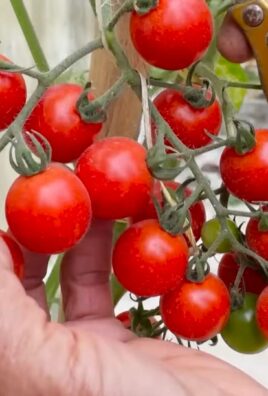
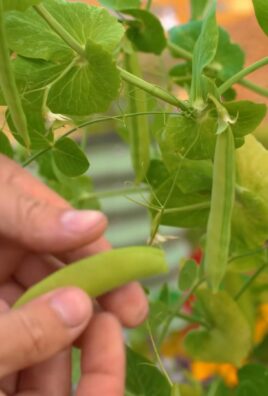
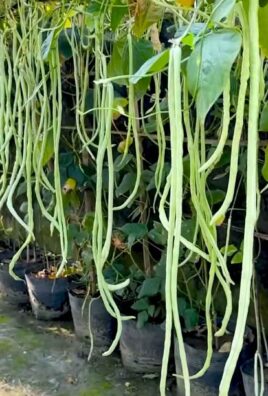
Leave a Comment